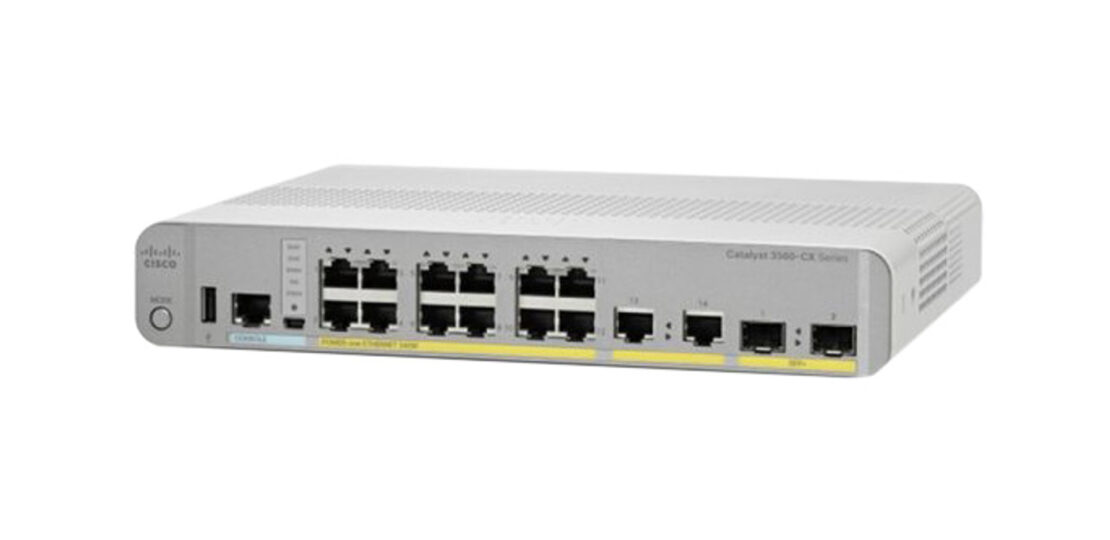Revolutionizing IT Hardware: The Power of Wireless Products
December 6, 2025 | by IoT Development Company

In the ever-evolving digital landscape, wireless products have become a cornerstone of modern connectivity. From Wi-Fi routers to wireless peripherals, these devices have redefined how we interact with technology. Businesses, educational institutions, and households alike depend on wireless solutions to enhance mobility, scalability, and productivity.
As IT hardware and computer hardware continue to advance, wireless technologies are playing a vital role in enabling seamless communication and efficient workflows. This guest post explores the world of wireless products — their importance, types, applications, and how they’re shaping the future of IT infrastructure.
The Rise of Wireless Technology in IT Hardware
Over the past two decades, wireless technology has evolved from a convenience to a necessity. In the early days of computing, wired connections were the only reliable means of communication. Ethernet cables, modems, and serial connections dominated the IT landscape. However, as the demand for mobility and flexibility grew, engineers and innovators began focusing on wireless communication.
Today, wireless products are integral components of IT hardware ecosystems. They eliminate the need for cumbersome cabling, simplify installation, and provide users with freedom of movement. From wireless mice and keyboards to enterprise-grade access points and 5G routers, the range of wireless hardware is vast and diverse.
The global adoption of wireless technology reflects a shift toward efficiency, scalability, and sustainability. Organizations recognize that wireless infrastructure not only supports modern operations but also reduces maintenance costs and enhances user experience.
Key Categories of Wireless Products
1. Wireless Networking Devices
The foundation of modern connectivity lies in wireless networking hardware. Devices like Wi-Fi routers, access points, and network adapters form the backbone of wireless communication in homes, offices, and industrial settings.
-
Wi-Fi Routers: These devices distribute internet access wirelessly across multiple devices, eliminating the need for Ethernet cabling.
-
Access Points (APs): Commonly used in enterprise environments, APs extend the reach of a wireless network and allow seamless roaming between zones.
-
Wireless Range Extenders: These boost existing Wi-Fi signals to eliminate dead zones in large spaces.
-
Wireless Network Cards (NICs): Installed in laptops or desktops, these provide the ability to connect to Wi-Fi networks.
Each of these products plays a crucial role in bridging connectivity gaps within an IT hardware infrastructure.
2. Wireless Computer Peripherals
Wireless peripherals have revolutionized how users interact with computers and devices. They combine functionality with convenience, enhancing both productivity and ergonomics.
-
Wireless Keyboards and Mice: Using Bluetooth or 2.4GHz technology, these peripherals provide clutter-free workspaces and improved mobility.
-
Wireless Printers: Allow users to print documents over Wi-Fi or Bluetooth without connecting physically to a computer.
-
Wireless Headsets and Speakers: Ideal for meetings, gaming, or multimedia applications, these devices deliver sound without tethering the user to a port.
-
Wireless External Drives: Provide flexible data transfer and backup solutions without the need for cables.
For businesses managing extensive computer hardware inventories, these wireless peripherals reduce cable management challenges and improve scalability.
3. Wireless Communication Devices
Beyond networking and peripherals, wireless communication devices enable real-time data exchange and collaboration.
-
Bluetooth Transmitters and Receivers: Facilitate short-range communication between devices like smartphones, laptops, and IoT sensors.
-
Cellular Modems and Hotspots: Provide mobile internet access using 4G, LTE, or 5G networks — critical for field operations and remote workers.
-
Two-Way Radios and Intercoms: Still essential in industries like logistics, construction, and security where instant voice communication is vital.
These devices empower businesses and individuals to stay connected without physical boundaries.
4. Wireless IoT Devices
The Internet of Things (IoT) has expanded the realm of wireless products into smart environments. From smart thermostats and lighting systems to wearable devices and industrial sensors, IoT hardware relies heavily on wireless technology to function.
IoT-based wireless products integrate with IT infrastructure to provide real-time monitoring, automation, and data analytics. In industries such as manufacturing and healthcare, these solutions enhance operational efficiency and safety.
How Wireless Products Enhance IT Infrastructure
The adoption of wireless technology has brought transformative benefits to organizations of all sizes. Below are some key ways wireless products improve IT and computer hardware ecosystems:
1. Enhanced Mobility and Flexibility
Wireless products allow employees and users to connect from virtually anywhere within a network range. This mobility is critical for hybrid work environments, where staff may switch between office spaces and remote setups seamlessly.
2. Simplified Infrastructure
Eliminating wired connections reduces clutter and simplifies network design. IT administrators can deploy wireless access points instead of running multiple Ethernet cables across large facilities, saving time and resources.
3. Scalability and Easy Expansion
Adding new users or devices to a wireless network requires minimal configuration. This makes wireless infrastructure ideal for growing businesses or educational institutions with expanding user bases.
4. Cost Efficiency
Though initial setup costs can be higher, wireless systems reduce long-term expenses related to maintenance, cabling, and installation. Wireless peripherals also reduce hardware wear and tear from constant cable plugging.
5. Seamless Integration with Cloud Systems
Wireless products make cloud connectivity effortless. Devices can synchronize data, perform backups, or access cloud-based applications without physical connectivity. This is particularly beneficial in modern IT hardware setups that rely on virtualization and remote management.
The Role of Wireless Products in Computer Hardware Evolution
As computer hardware evolves toward smaller, faster, and more power-efficient designs, wireless technologies continue to adapt in tandem. Modern motherboards often include built-in Wi-Fi and Bluetooth modules. Laptops now ship with multi-band wireless adapters, while gaming consoles and smart TVs rely on wireless connections for online access.
Wireless interfaces are no longer optional add-ons—they’re core components of computing systems. This shift signifies a paradigm where wireless performance is as important as CPU speed or memory capacity.
Furthermore, wireless charging has emerged as another major innovation. From smartphones to laptops and wearables, inductive charging eliminates the need for power cables, signaling a future where even energy transfer may become completely wireless.
Wireless Security: Protecting Your IT Hardware
While wireless technology offers freedom and convenience, it also introduces new security challenges. Unauthorized access, data interception, and signal interference are common risks. Protecting IT hardware from these threats requires adopting strong security practices:
-
Use WPA3 Encryption: Ensure all Wi-Fi devices support WPA3, the latest and most secure encryption standard.
-
Implement Network Segmentation: Separate guest and internal networks to limit unauthorized access.
-
Regular Firmware Updates: Keep wireless routers, access points, and devices updated to patch vulnerabilities.
-
MAC Address Filtering: Restrict network access to approved devices only.
-
Use VPNs for Remote Access: Secure data transmitted over public or external networks.
By maintaining these safeguards, organizations can harness wireless technology without compromising data security.
Emerging Trends in Wireless Technology
1. Wi-Fi 7 and Beyond
The evolution from Wi-Fi 6 to Wi-Fi 7 is delivering faster speeds, lower latency, and better spectrum efficiency. This next generation of wireless communication will empower bandwidth-heavy applications such as 8K streaming, AR/VR, and edge computing.
2. 5G Networks
5G has redefined mobile and enterprise connectivity. With its ultra-low latency and high throughput, it’s driving innovations in autonomous vehicles, remote surgery, and IoT ecosystems.
3. Wireless Power Transfer
Wireless charging pads and magnetic charging systems are just the beginning. Emerging technologies aim to deliver power over distance, enabling true wireless workspaces.
4. Integration with Artificial Intelligence (AI)
AI-driven wireless networks can dynamically optimize bandwidth allocation, detect anomalies, and enhance security. Intelligent wireless products adapt to usage patterns, improving network efficiency.
5. Sustainability and Energy Efficiency
Manufacturers are developing eco-friendly wireless devices with energy-saving modes and recyclable materials, aligning with global sustainability goals.
Choosing the Right Wireless Products
Selecting the right wireless hardware depends on usage needs, budget, and environment. Here are some factors to consider:
-
Performance Requirements: Evaluate data speeds, range, and bandwidth based on operational needs.
-
Device Compatibility: Ensure compatibility between wireless devices and existing IT infrastructure.
-
Security Features: Choose products that support modern encryption and firmware updates.
-
Scalability: Opt for solutions that allow future expansion as your network grows.
-
Brand Reliability: Choose trusted manufacturers with strong warranties and support.
When integrated thoughtfully, wireless products can future-proof your computer hardware systems and deliver long-term reliability.
Conclusion:
Wireless products are not merely accessories—they are essential components driving the next era of technological innovation. From enabling global connectivity to transforming how we work, communicate, and compute, wireless technology has become the lifeline of the digital world.
In the realm of IT hardware and computer hardware, adopting the right wireless solutions enhances performance, productivity, and adaptability. As we continue moving toward smarter, faster, and more connected environments, wireless products will remain at the heart of progress — bridging the gap between people and technology, without the tangle of cables.
RELATED POSTS
View all


